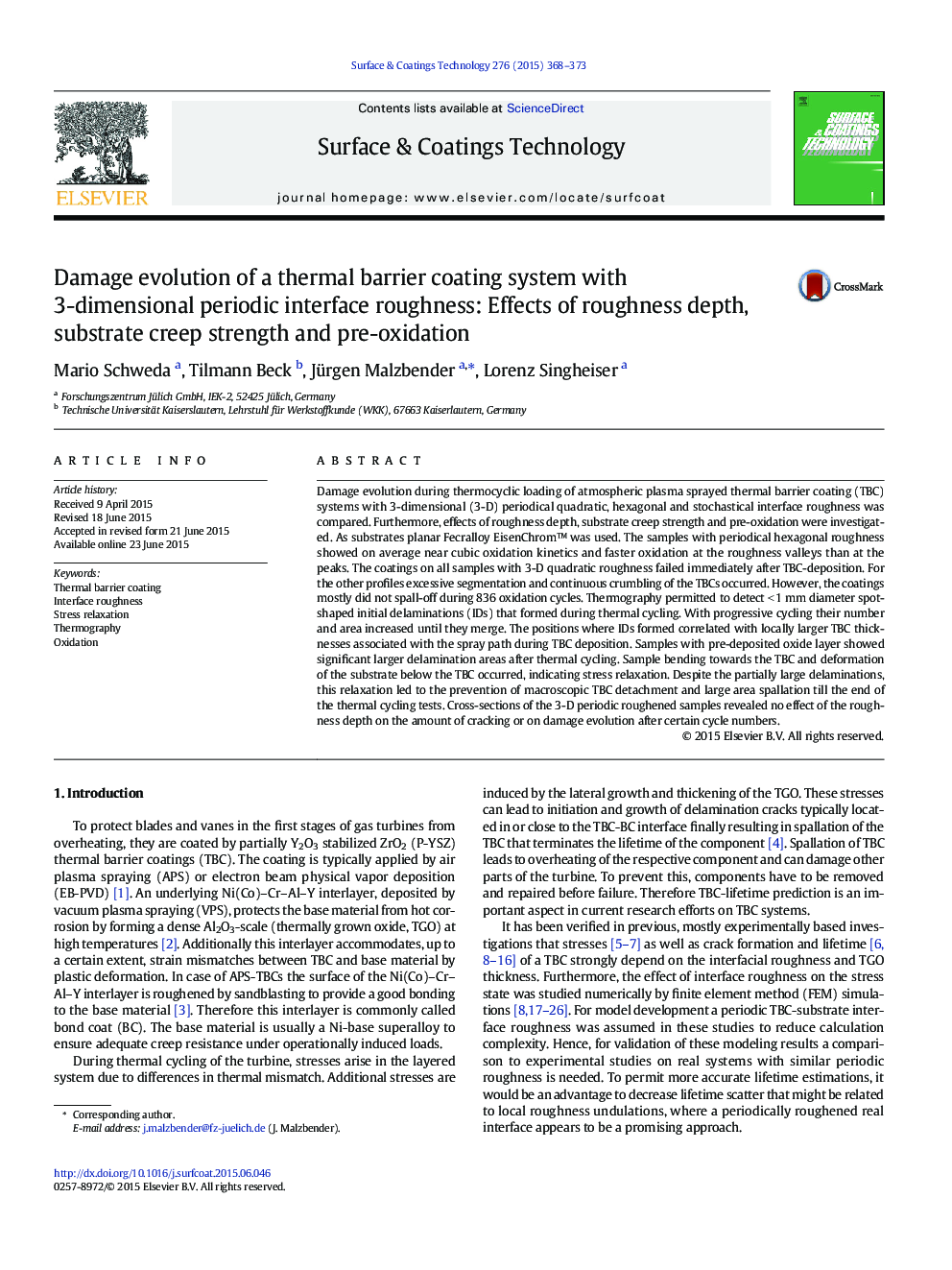| Article ID | Journal | Published Year | Pages | File Type |
|---|---|---|---|---|
| 1656994 | Surface and Coatings Technology | 2015 | 6 Pages |
•Faster oxidation at roughness valleys than at the peak positions.•For all hexagonal and stochastically roughened samples pronounced segmentation and continuous crumbling occurred without spallation.•Despite the partially observed strong TBC-delamination, stress relaxation avoided large area TBC-spallation during the thermal cycling.•Pre-oxidized samples showed significantly larger delamination crack areas.
Damage evolution during thermocyclic loading of atmospheric plasma sprayed thermal barrier coating (TBC) systems with 3-dimensional (3-D) periodical quadratic, hexagonal and stochastical interface roughness was compared. Furthermore, effects of roughness depth, substrate creep strength and pre-oxidation were investigated. As substrates planar Fecralloy EisenChrom™ was used. The samples with periodical hexagonal roughness showed on average near cubic oxidation kinetics and faster oxidation at the roughness valleys than at the peaks. The coatings on all samples with 3-D quadratic roughness failed immediately after TBC-deposition. For the other profiles excessive segmentation and continuous crumbling of the TBCs occurred. However, the coatings mostly did not spall-off during 836 oxidation cycles. Thermography permitted to detect < 1 mm diameter spot-shaped initial delaminations (IDs) that formed during thermal cycling. With progressive cycling their number and area increased until they merge. The positions where IDs formed correlated with locally larger TBC thicknesses associated with the spray path during TBC deposition. Samples with pre-deposited oxide layer showed significant larger delamination areas after thermal cycling. Sample bending towards the TBC and deformation of the substrate below the TBC occurred, indicating stress relaxation. Despite the partially large delaminations, this relaxation led to the prevention of macroscopic TBC detachment and large area spallation till the end of the thermal cycling tests. Cross-sections of the 3-D periodic roughened samples revealed no effect of the roughness depth on the amount of cracking or on damage evolution after certain cycle numbers.
